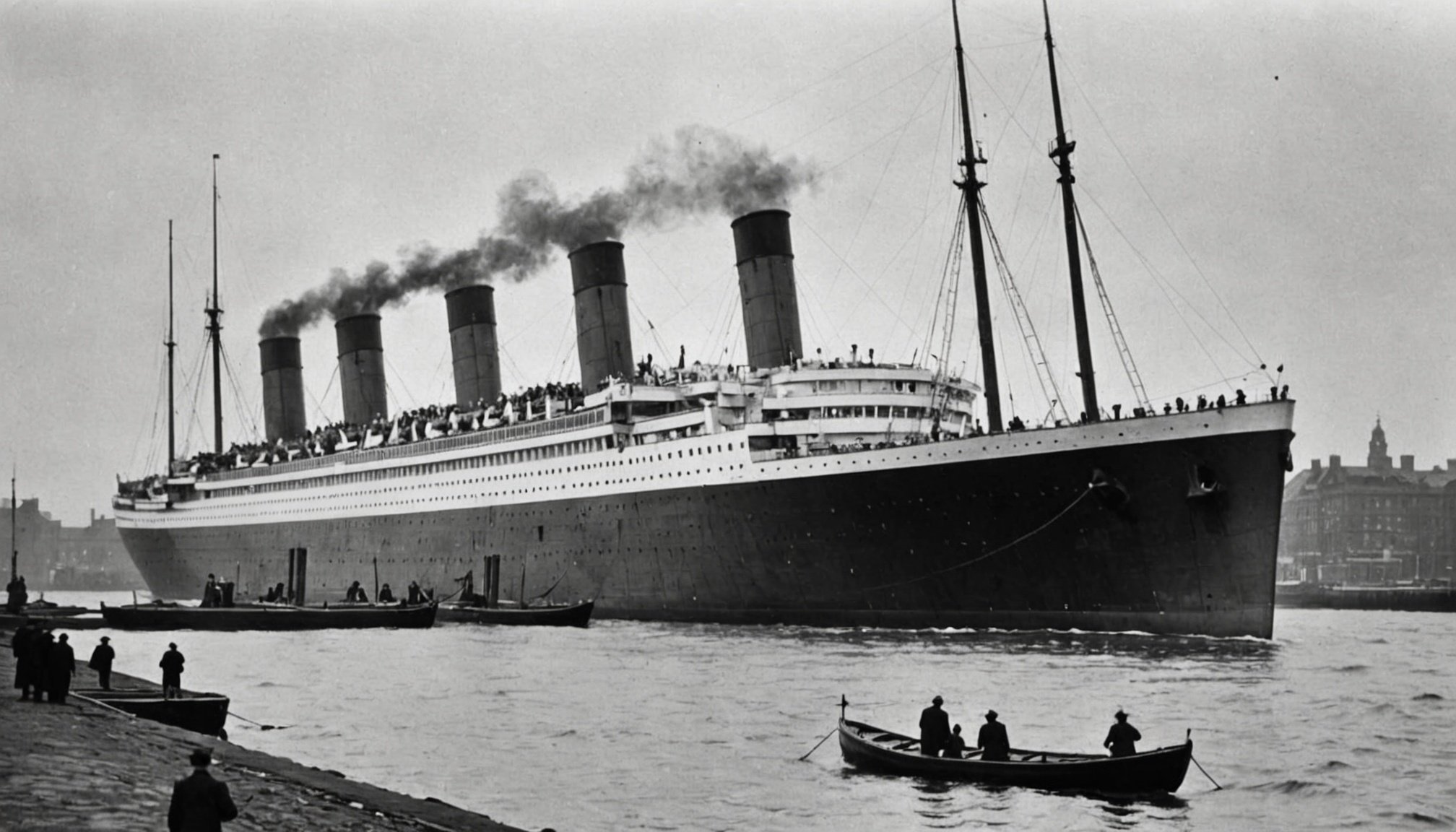Introduction to Liverpool’s Titanic Connection
Liverpool boasts a rich maritime history, intricately linked to the story of the Titanic. This famous passenger liner, once the largest ship in the world, holds historical significance largely due to its ties with Liverpool. Notably, the city was the home port marked on the Titanic’s stern, signifying its strong connection.
The Liverpool Titanic connection begins with the ship’s construction, commissioned by the White Star Line, a prominent shipping company headquartered in Liverpool. Even though the Titanic was constructed in Belfast, its management, logistics, and crew recruitment were deeply rooted in Liverpool. This connection offered the city a notable place in Titanic history.
Have you seen this : Discover Chester’s Roman Heritage: Unveiling Historical Sites with Ancient Roots
Liverpool’s historic sites preserve this legacy, capturing the public’s interest and imagination, serving as a testament to its maritime significance. While the Titanic never set sail from Liverpool, these local connections have kept the narrative alive, nurturing the collective memory of the tragedy. Furthermore, local efforts continue to celebrate and preserve the Titanic’s legacy, ensuring that Liverpool remains at the heart of its story, portraying an enduring link through exhibitions, memorabilia, and dedicated exhibits.
Notable Historic Sites in Liverpool
Liverpool is home to several historic landmarks that hold rich tales from its maritime past. These locations offer a window into the city’s vibrant history, particularly its connection to the Titanic.
Also to read : Discover the Best Photogenic Walking Trails in the Stunning Yorkshire Moors
The Titanic Hotel
Nestled within the Stanley Dock, the Titanic Hotel is a remarkable homage to the ill-fated Titanic. The location itself holds a significant place in the ship’s history, as it was once central to transatlantic passenger ship travel, making it a key hub in maritime navigation. The hotel preserves the grandeur of its storied past while offering modern luxury, inviting visitors to experience Liverpool’s seafaring legacy firsthand.
Merseyside Maritime Museum
An essential stop for history enthusiasts, the Merseyside Maritime Museum showcases an intriguing array of exhibits and collections related to the Titanic. The museum offers detailed insights into the ship’s construction, its tragic voyage, and the compelling stories of its passengers. By engaging with these artefacts, visitors can gain a deeper understanding of Liverpool’s crucial role in maritime history and the broader story of the Titanic.
Albert Dock
Albert Dock stands as a testament to Liverpool’s historical significance in shipbuilding and maritime trade. This notable location supported the city’s thriving commerce in the 19th century and contributed to its expansion as a global port. Its restored warehouses now house shops, restaurants, and museums, blending historical charm with modern attractions.
Tours and Visitor Experiences
When embarking on a Titanic tour in Liverpool, visitors are swiftly transported back to the early 20th century. These guided tours are meticulously crafted to focus on the Titanic’s history and its deep-rooted connection to the city. Liverpool, being a significant hub during the Titanic era, offers a rich narrative filled with engaging details for history enthusiasts.
Exploring the museum exhibits, visitors will encounter a fascinating array of artifacts and personal stories from those aboard the ill-fated ship. These exhibitions serve to humanize the tragedy, giving insight into the lives of the crew and passengers. The personal stories, coupled with genuine artifacts, enhance the emotional depth and educational value of the visit.
For those planning their visit, practical visitor information is crucial. Museums typically operate from 10 AM to 5 PM, though hours may vary seasonally. Tickets can often be purchased both online and at the venue. Accessibility is prioritized, with most exhibitions accommodating wheelchairs and providing sensory-friendly experiences. Additionally, guided tours often offer audio aids and multilingual support, ensuring a comprehensive experience for all attendees.
Ultimately, these tours provide more than just a historical recount; they offer a poignant journey through time, deepening one’s understanding of the Titanic’s enduring legacy.
Personal Stories and Anecdotes
Delving into Titanic survivor stories reveals heartfelt accounts from families of crew members and passengers, offering a rich tapestry of personal experiences. These narratives, passed down through generations, provide an intimate glimpse into a bygone era.
In the Liverpool community, local narratives thrive. Such stories often come alive during various commemorative events that hold deep cultural significance. These gatherings allow for the preservation and sharing of memories related to the Titanic, ensuring the stories remain vibrant and relevant. Events such as these not only honor the past but also strengthen community bonds through shared memory and tribute.
Historians and experts play a crucial role in keeping Liverpool’s Titanic legacy alive. Their extensive research and passionate storytelling bring new dimensions to these tales. As one historian notes, “Liverpool’s connection to the Titanic is woven into the very fabric of the city, with every story adding a thread.”
These anecdotes and stories form a complex mosaic that continues to captivate and educate. Through community efforts, local narratives, and scholarly insights, the Titanic’s legacy in Liverpool stands as a poignant reminder of both loss and unity.
Planning Your Visit to Titanic Sites
Exploring Titanic-related sites requires careful itinerary planning to maximise your experience. Start your day at the Merseyside Maritime Museum, where you can delve into Titanic’s fascinating past. Allocate a robust couple of hours here before heading to St George’s Hall, offering a real sense of Liverpool’s shipping heritage.
Visiting tips are essential to enhance your travel experience. Combine your Titanic visits with stops at the Liverpool Cathedral or the iconic Beatles Story. This combination not only enriches your itinerary but also immerses you in the city’s diverse culture and history. For an efficient day, consider using the hop-on-hop-off bus service to seamlessly navigate between these attractions.
When it comes to dining and accommodations, the area doesn’t disappoint. Titanic tourists frequently praise The Titanic Hotel for its elegance and historical charm. Dining options are aplenty, with nearby dining establishments like Docklands Fish & Chips offering traditional British fare. The Baltic Market is also highly recommended for a vibrant, local dining scene.
Incorporate these travel tips into your itinerary for a well-rounded exploration of Liverpool’s Titanic heritage. By planning strategically, you can ensure a visit that’s both enriching and memorable, tailored to your interests.
The Legacy of Titanic in Liverpool
Liverpool, a city intricately connected to the Titanic legacy, has seen its identity shaped by this historical narrative. The ill-fated ship, registered in Liverpool, left an indelible mark on the maritime practices and community engagement throughout the city.
The Titanic’s story profoundly influenced Liverpool, leading to a cultural and historical introspection. The Titanic disaster marked a pivotal moment, catalysing changes in maritime regulations that shaped future naval practices. In Liverpool, these enhanced safety measures became a cornerstone of trust in maritime voyages. It was pivotal for ensuring the lessons learned from the tragedy were embedded in shipbuilding traditions and procedures.
Community efforts in Liverpool have played a significant role in keeping the Titanic history alive. They have transformed the ship’s memory into a vibrant aspect of cultural heritage. Local exhibitions regularly explore the Titanic’s connection to Liverpool, highlighting stories of bravery and loss. These events foster a strong sense of history and communal identity, drawing both residents and visitors into an engaging dialogue about the past.
Engagement in Liverpool reflects a broader commitment to acknowledging the significance of the Titanic legacy, ensuring it continues to influence the city’s fabric and maritime identity. Liverpool indeed remains a guardian of Titanic’s enduring history, echoing lessons and stories through generations.











